How to Replace the Sub Oxygen Sensors
1990-1994 Lexus LS400
This tutorial will show you how to install universal oxygen sensors. A universal oxygen sensor requires you to cut off the wiring harness from the old OEM sensor and splice it to the new universal sensor. It does take a little extra time to do this but you will save a LOT of money if you go the universal route. I replaced all 4 of my oxygen sensors for a little under $150...many places to buy them. You do not need a special oxygen sensor wrench to replace these sensors. However, you will need one if you want to torque the sensors correctly. Call your local Autozone to see if they have an oxygen sensor wrench available to loan out.
Tools Needed:
- Ramps
- 22mm or 7/8" box wrench
- Multimeter (optional)
- Wire stripper / crimper
- Pliers
- Exacto knife
- Lighter
Parts/Supplies Needed:
- 2 sub oxygen sensors
- Electrical tape
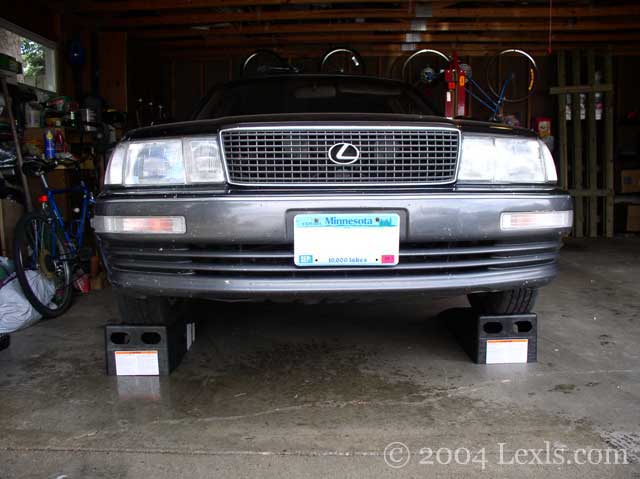
1) Put the car up on ramps. Jacking up the car and putting it on jack stands will not give you enough room to work unless you have a high jack. Ramps give you more room, even though it's not that much.
2) Important: Wait a while for the car to cool down. If you do not wait there is a good chance you'll be burned on the exhaust components or the engine. Your hands are right by the engine and exhaust components when removing these sensors and these components get very hot very fast. Be careful and use common sense. I waited over an hour for things to cool down somewhat.
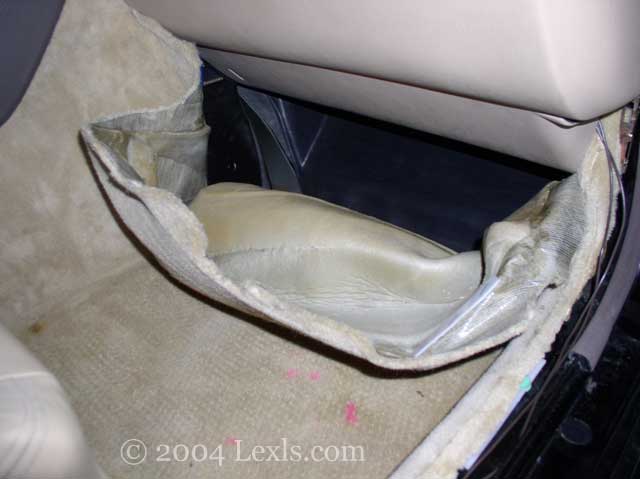
3) Pull back the passenger-side carpet. I also pulled off the bottom trim by the door so this would be easier, you may not need to do this.

4) Disconnect the RH sub oxygen sensor wiring harness from under the carpet. Then push the rubber grommet through so it is hanging from the oxygen sensor.

5) Unscrew the RH sub oxygen sensor using a 22mm or 7/8" wrench. If your sensors are original it will probably take a little extra elbow grease to get them out.
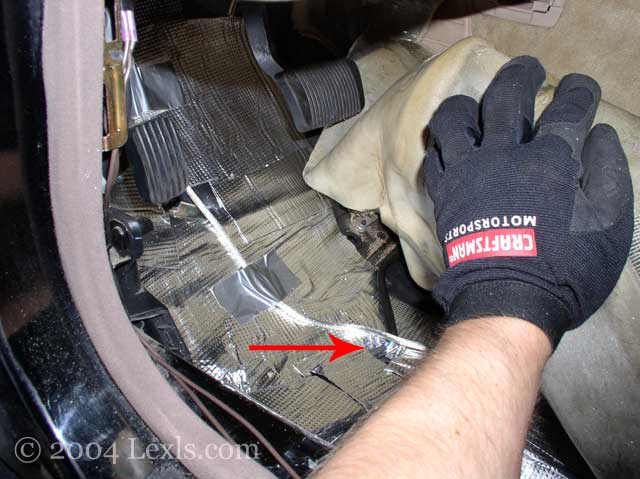
6) Repeat steps 3-5 for the LH sub oxygen sensor. Here's the location of the clip for the LH sub oxygen sensor.
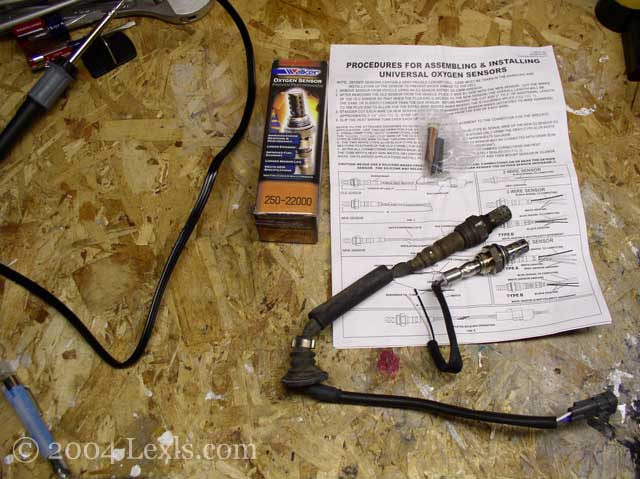
New universal oxygen sensor vs. OEM oxygen sensor. The Walker sensor comes with the sensor, butt-connectors, heat shrink tubing, high-temp antiseize, and instructions.

7) Squeeze this clamp to open it up so the wires can slide inside the wire cover.
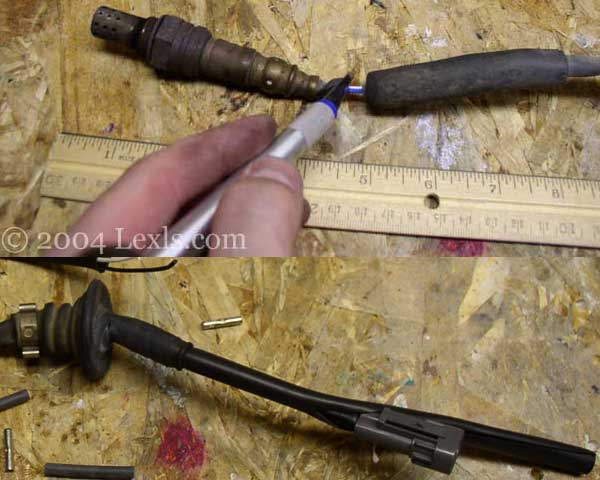
8) Cut the wire cover towards the base of the oxygen sensor. Then cut the other end of the wire cover lengthwise. Now slide the wires out.
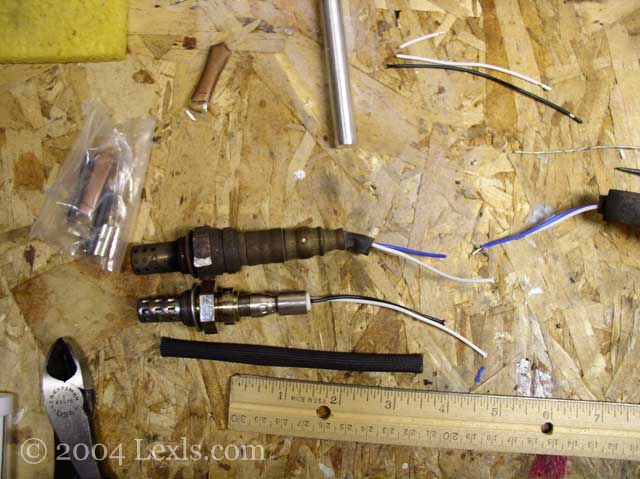
9) Cut the wiring harness off of the old sensor a few inches from the base of the old sensor. Then stagger the 2 wires on the wiring harness and the new sensor. Then strip a 1/4" inch off the ends to expose the wire. The finished product needs to be at least as long as the OEM sensor or slightly longer.
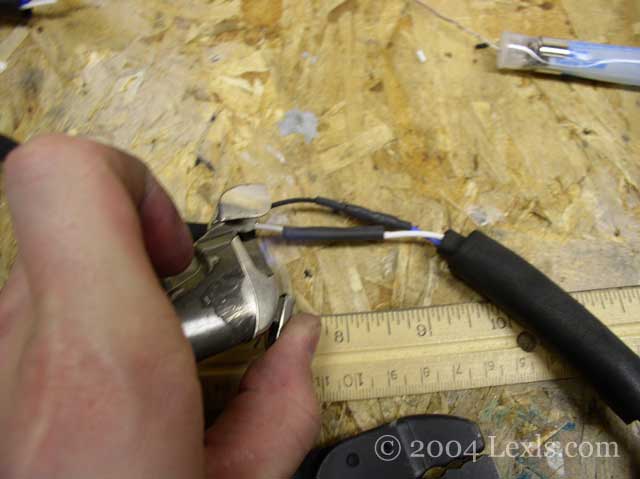
10) Crimp the 2 butt connectors to wires on the harness. Next, slide a heat shrink tube over the white wire. Then crimp the white wire from the sensor to the white wire on the harness. Now slide a heat shrink tube over the blue wire. Then crimp the black wire from the sensor to the blue wire on the harness. Once the wires have been crimped line up the heat shrink tubing and use a lighter to shrink it.

Here's what it should look like when the wires are connected and the heat shrink tubing is on.
11) Slide the wire cover back into its normal position and use electrical tape to seal up the lengthwise cut.
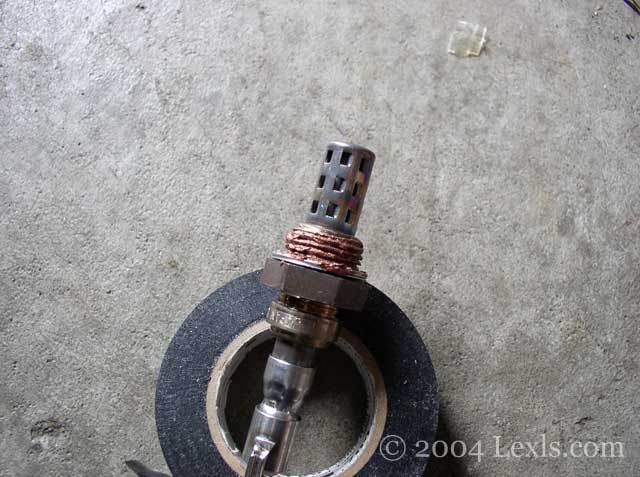
12) Apply the high-temp antiseize to the threads of the oxygen sensors.
13) Screw in the sensors by hand so you know the threads are aligned properly and then torque them to 33 ft-lbs (450 kgf-cm, 44 N-m). Since I didn't have an oxygen sensor wrench I just tightened them.
14) Thread the wiring harnesses through the hole in the car and make sure the grommet is in properly. Finally clip in the wiring harnesses and put the carpet back.
If you found this information useful please support the site by clicking the button below and making a donation. Thank you.
